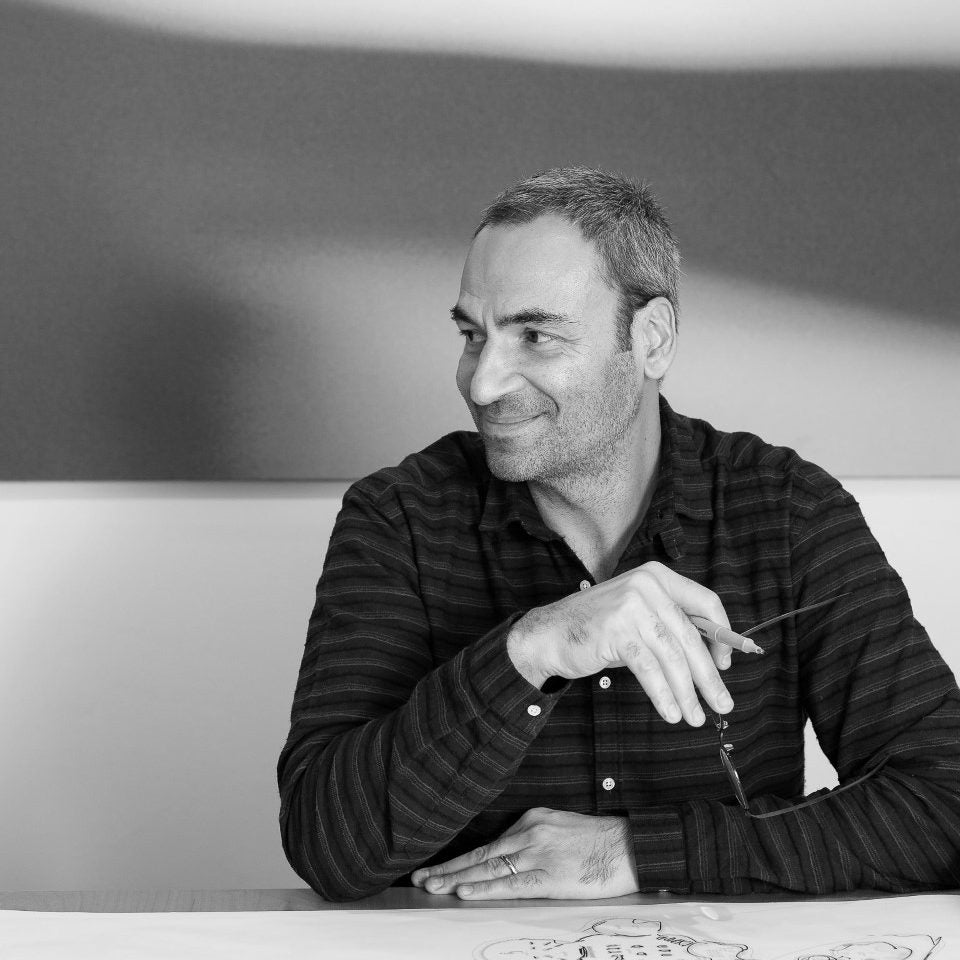As the new Summer 24 collection was born out of the idea of a modern ‘grand tour’, we travelled to the Turkish village of Ula to shoot our elevated and versatile warm weather wardrobe. For two days, the home of Istanbul-born, Ula-relocated architect Emir Uras provided a picture-perfect base to lose ourselves in the Turkish countryside. His interdisciplinary design studio, URAStudio, continually creates spaces that help inspire the way we live, learn, heal, work and play. This is no more apparent than in the modernist paradise he has lived and worked from for the last four years..
A few months after the shoot and with the May drizzle attempting to dampen our summer feeling as we launch the collection, sun-soaked memories of time spent in Ula remind us how beautiful life can be. On a particularly damp morning in London, we called Emir to learn more about his practice, his love of the region, and the freedom of working without an office.

Oliver Spencer: Hi Emir, thanks so much for taking the time to speak. Now, of course we know you well, but tell us how you would like to be introduced; architect, artist?
Emir Uras: I often think of that. I never felt like I could fit into any mode; as an architect, as an artist, as a father even. However, I practice as an architect.
OS: Let’s begin by going back to the beginning. Was there a pivotal moment in your life when you thought, ‘Buildings are my passion’?
EU: I had a very close friend in primary school, his father was an architect. I visited his home after school and it was such an interesting house and that sparked my interest. I must have been around 13 years old and it encouraged me to ask questions about how liveable spaces are formed.

OS: How would you describe your architectural approach? Your profile page frames it as a form of poetry, an expression and balance of form, material, space and place. Could you expand on this?
EU: To me, architecture is very much about reinforcing the human connection, it helps to make us feel more human. The proportions, details, forms all become material in themselves. Every form has its own energy and radiates a certain language. Form in its essence is a language andI try to work to work within that language. Within this there are a few materials that continually intrigue me, such as organic forms, and rounded edges. Of course, scale plays a big role. The house that the shoot took place in is 125 square metres, but feels so much larger because it’s working within scale and in sections. For example, if you were to cut the house, you’d see higher spaces meet lower, which then meet higher again. The dynamics truly make those 125 square metres matter.
OS: That’s your mastery, it’s truly a beautiful space. Can you set the scene for our Summer shoot in Ula, firstly the house itself and the surrounding area?
EU: I worked on a project in the area, so I started traveling back and forth. I fell for the charms of the area and started daydreaming about securing land. Then, on the first day of surveying the area, I saw a piece of land with a eucalyptus tree and instantly pointed it out to my realtor friend. We found out the next day that it was for sale. We bought it then built two identical houses, one for me and one for my best friend. I moved in four years ago, leaving the city of Istanbul behind.

OS: Was that always the intention?
EU: The house was intended as a weekend house, but I didn’t leave. I’ve long wanted to move to a quiet area, but this happened coincidentally and organically.
OS: For you, what makes a great home?
EU: When you’re completely content. There’s nothing more, nothing less. It’s balanced. As I get older, I like a simpler lifestyle. I shed everything I don’t need.

OS: What does Ula mean to you? What’s the strongest truth about the area?
EU: The strongest truth is it’s Turkish countryside, it’s all farmland and rolling hills, forests that also meet the sea. The village is right at the end of one of the biggest bays in Turkey, which is famous for kite surfing.
OS: Our time with you was truly idyllic, is your everyday?
EU: It is. I tend to wake up early in the morning, focus on work and finish as much as I can by midday. Working here is like being a temple. It’s much more efficient than working in a busy city as there’s no commute, no traffic. I have an assistant that moved from the city and we meet everyday. He comes to the studio space and we delegate work all around. Before I had everything under one roof and we have more interconnected parts now, but it works. Ultimately, I don’t have an office and it’s freeing.
